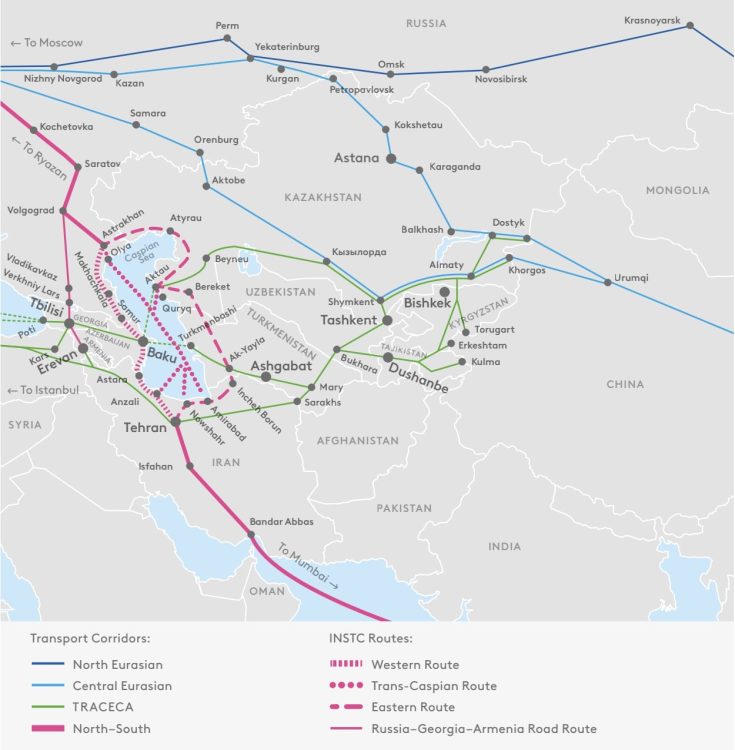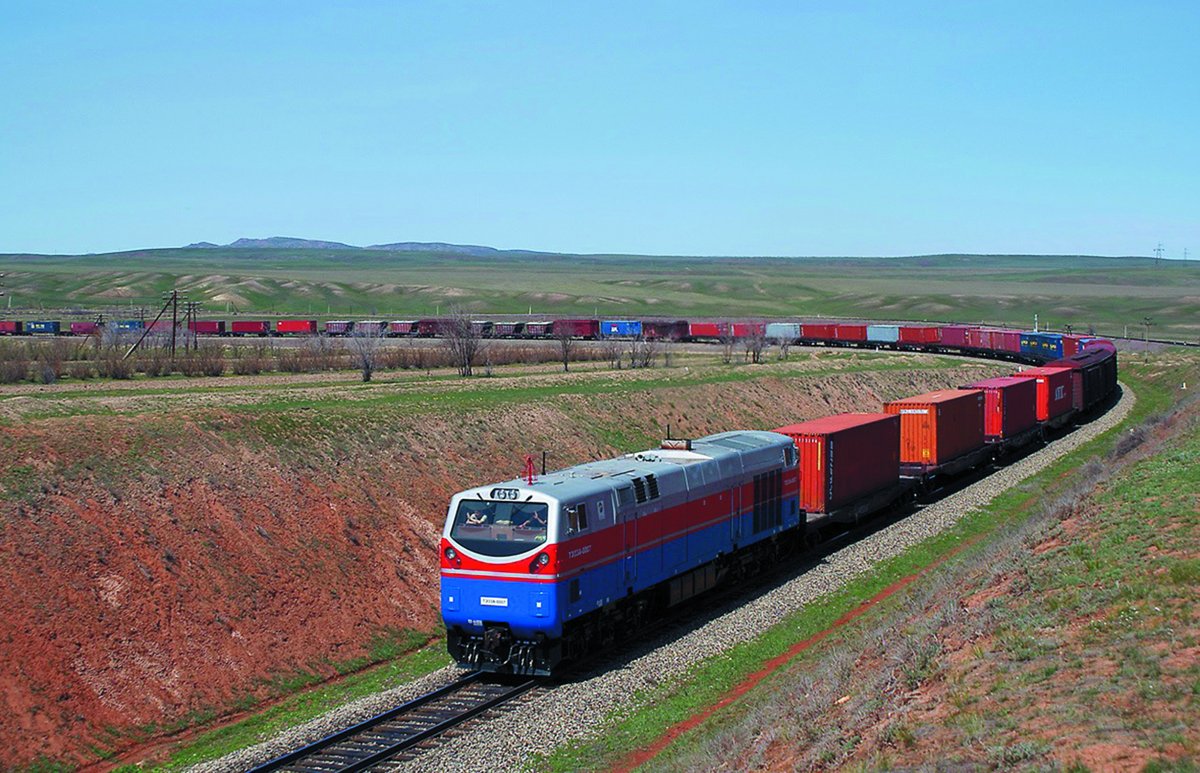Russia, Kazakhstan and Turkmenistan form joint venture on INSTC

The railway companies of Russia, Kazakhstan and Turkmenistan have formed a new joint venture to operate rail freight services on the eastern branch of the International North South Transport Corridor (INSTC). This corridor links Russia to India via Iran.
The eastern branch runs through Turkmenistan, east of the Caspian Sea rather than through Azerbaijan, west of the same sea. This has gradually become a preferred route considering the political turmoil and lack of infrastructure in the Caucasus region. The establishment of a joint venture indicates the trust in this route of the parties involved.
The agreement was signed at TransRussia 2023 between KTZ Express JSC, JSC RZD Logistics and th eTransport and Logistics Center of Turkmenistan JSC. The parties agreed to combine their competencies to form competitive tariff rates and seamless transportation of goods on the corridor. The agreement also includes the participation of the cities Aksaraiskaya, Ozinki, Bolashak, Inche-Burun and Serakhs, which are all situated en route.

The INSTC
The International North South Transport Corridor (INSTC) links India and Russia by ship, rail, and road. After transit through Iran cargo is reloaded in the port of Bandar Abbas, to be shipped by vessel to the Indian port of Mumbai. The original plan envisioned a corridor passing through Azerbaijan, crossing the border to Iran at the Astara-Astara border crossing.
However, this route has met many challenges. In Iran, crucial infrastructure is missing to facilitate this route. The railway link between Astara and Sarakhs is not complete, hence cargo needs to be shipped by truck through Iran. A railway link to the border with Armenia is there and a preferred option for Iran, as it maintains good relations with this neighbouring state. But transit through Armenia means the cargo will eventually need to cross the border with Azerbaijan, and the lattertwo countries are not on good terms.
Alternatives to a turbulent route
While the countries involved continued to discuss this debacle without result, several other options were discovered. One option was to cross the Caspian Sea by vessel, a route referred to as the middle branch. This however requires an additional hassle of reloading. The other option was to transit Turkmenistan.
The Turkmenistan option quickly grew out to become a much-preferred option. In October 2022 six trains departed in southern direction launching the official start of a regular service. In December, RZD started subsidising traffic on this branch of the corridor. A 20 per cent discount applies for operators that transport containers via the Russian-Kazakh border crossings as well as the Bolashak-Serkhetyaka border crossing between Kazakhstan and Turkmenistan.






